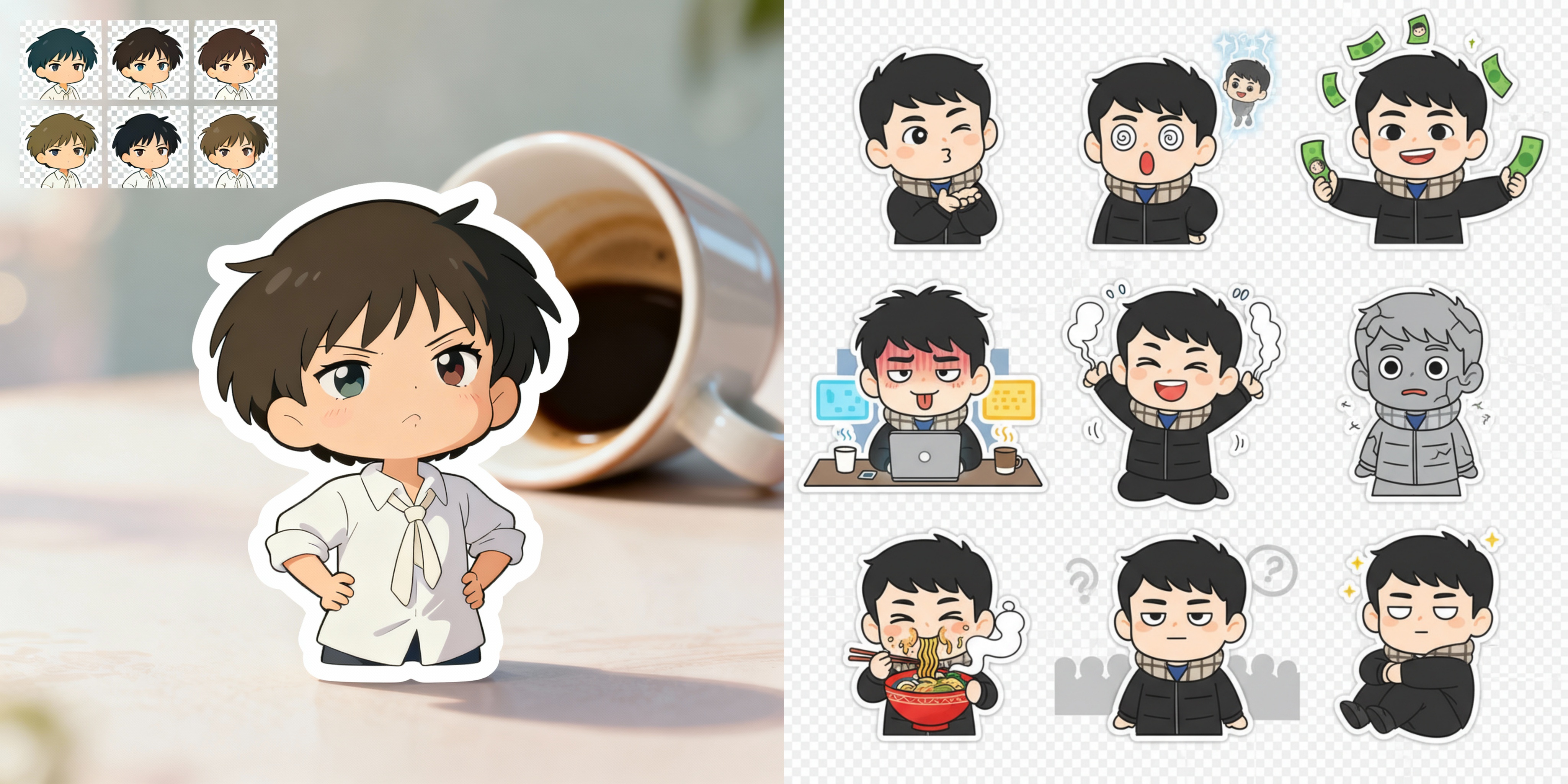Chibi Character Sticker Pack: Expressive Ghibli-Style Emotes
- Nano Banana
- Seedream 4.0
Introduction
Chibi sticker packs are essential in digital communication, enhancing chat interactions with expressive, meme-like characters. High-quality sticker sets require stylistic consistency, expressive range, and production-ready transparency. This case study compares how SeedDream and Nano Banana handled uniform chibi design requirements, including vibrant colors, white outlines, and transparent backgrounds.
Prompt: Please create a set of 9 Chibi stickers featuring [the character in the reference image], arranged in a 3x3 grid.
Design requirements:
- Transparent background.
- 1:1 square aspect ratio.
- Consistent Chibi Ghibli cartoon style with vibrant colors.
- Each sticker must have a unique action, expression, and theme, reflecting diverse emotions like "sassy, mischievous, cute, frantic" (e.g., rolling eyes, laughing hysterically on the floor, soul leaving body, petrified, throwing money, foodie mode, social anxiety attack). Incorporate elements related to office workers and internet memes.
- Each character depiction must be complete, with no missing parts.
- Each sticker must have a uniform white outline, giving it a sticker-like appearance.
- No extraneous or detached elements in the image.
- Strictly no text, or ensure any text is 100% accurate (no text preferred).
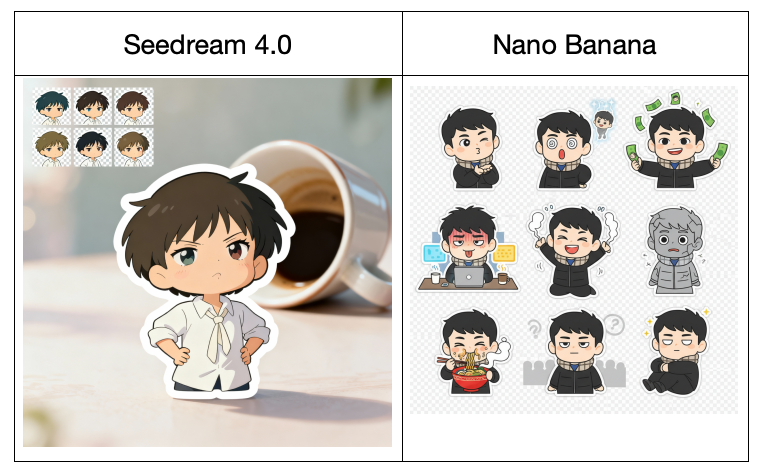
Results & Observations
SeeDream Output:
SeeDream focused on single-character renderings, delivering a high-quality sticker-like image with strong detailing. The design includes clean white outlines and polished shading, which aligns well with sticker aesthetics. However, it did not generate the full 3×3 grid set — instead, it emphasized one central character, supplemented by small variants. The output is refined and visually strong, but falls short of the prompt’s demand for a full nine-emotion sticker pack.
Nano Banana Output:
Nano Banana successfully produced a complete 9-sticker grid, with consistent proportions, outlines, and cartoon style. The stickers are varied and expressive, covering multiple meme-like situations: holding money, stressed at a desk, eating noodles, soul leaving body, etc. The overall effect is playful and diverse, aligning closely with messaging-app sticker aesthetics. The drawback lies in less detailed rendering, with flatter color treatment compared to SeedDream’s more polished shading.
Conclusion
SeeDream excels in visual polish and refinement, generating sticker-ready characters with high aesthetic value. However, it does not fully satisfy multi-sticker set requirements.
Nano Banana, by contrast, delivers a complete, expressive sticker pack, with variety and humor perfectly tuned for meme-driven internet culture. While its execution is less polished than SeedDream’s, it wins in quantity, completeness, and alignment with the 3×3 grid requirement.
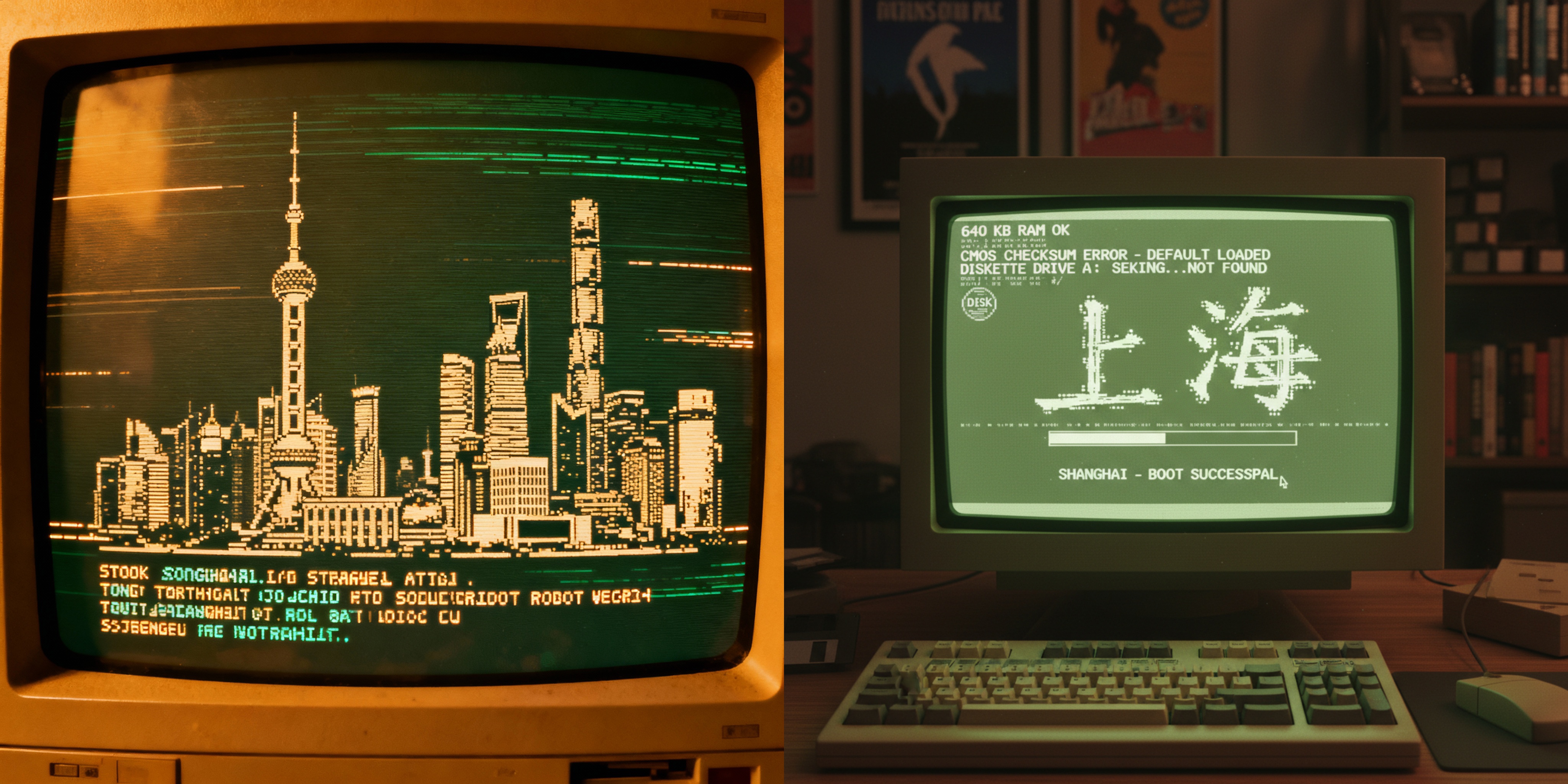
Shanghai in ASCII: Retro CRT Boot Screen Art
This blog explores how two cutting-edge AI models, Seedream 4.0 and Nano Banana, interpret the same creative prompt: “Retro CRT computer boot screen that resolves into ASCII-art of Shanghai skyline.” By comparing their outputs, we uncover the unique strengths of each model in capturing retro aesthetics, balancing realism with stylization, and communicating cultural identity through ASCII art.
By Brooklyn 一 Sep 29, 2025- Nano Banana
- Seedream 4.0
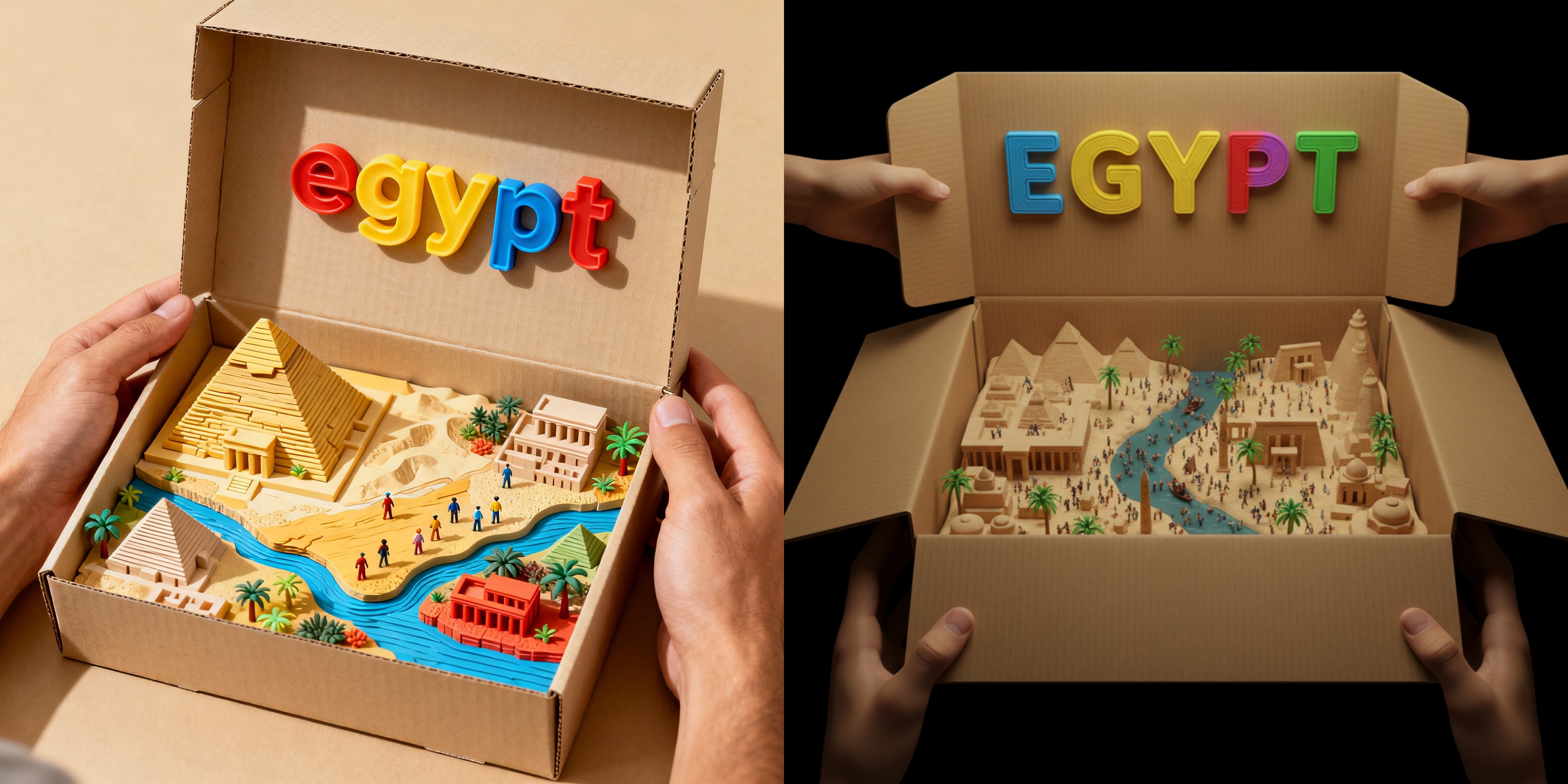
Toy Box Dioramas: Comparing SeedDream 4.0 and Nano Banana on Egypt
This article examines how SeedDream 4.0 and Nano Banana interpret the diorama-in-a-box prompt. The task requires balancing geographic accuracy, toy-like craftsmanship, and visual storytelling while maintaining the illusion of a 3D-printed tactile model. The inclusion of iconic landmarks, miniature figures, and colorful typography makes this task particularly challenging in terms of detail density and scene harmony.
By Brooklyn 一 Sep 29, 2025- Nano Banana
- Seedream 4.0
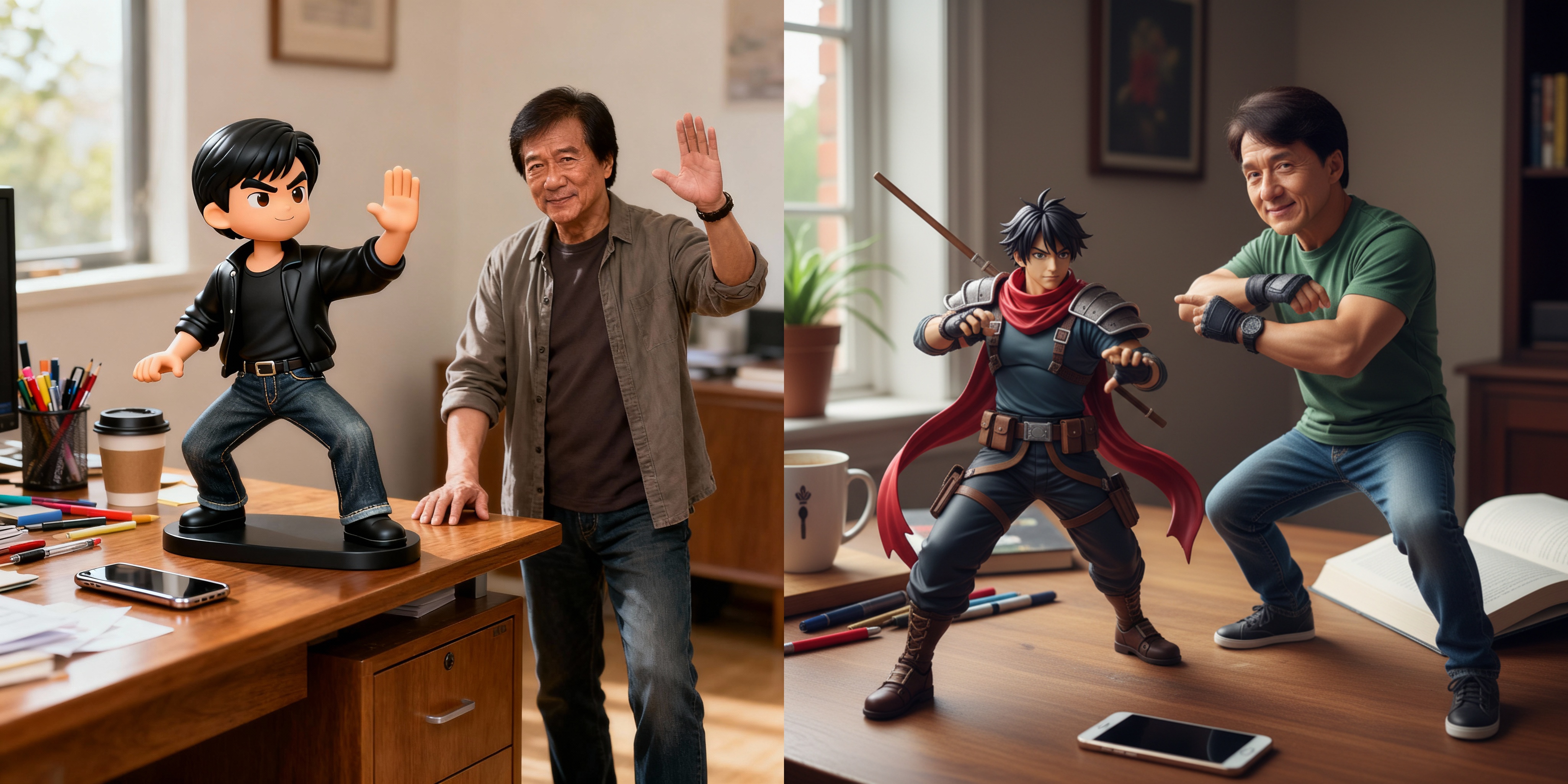
SeedDream 4.0 vs Nano Banana: Action Figures and Real Person in the Same Frame
This article analyzes the performance of SeedDream 4.0 and Nano Banana in generating images where an anime-style action figure and its real-life counterpart appear in the same scene. The task involves capturing both figurine aesthetics and natural photography style, producing a visually coherent and vibrant image that resembles a casual mobile snapshot.
By Brooklyn 一 Sep 29, 2025- Nano Banana
- Seedream 4.0
- X
- Youtube
- Discord
